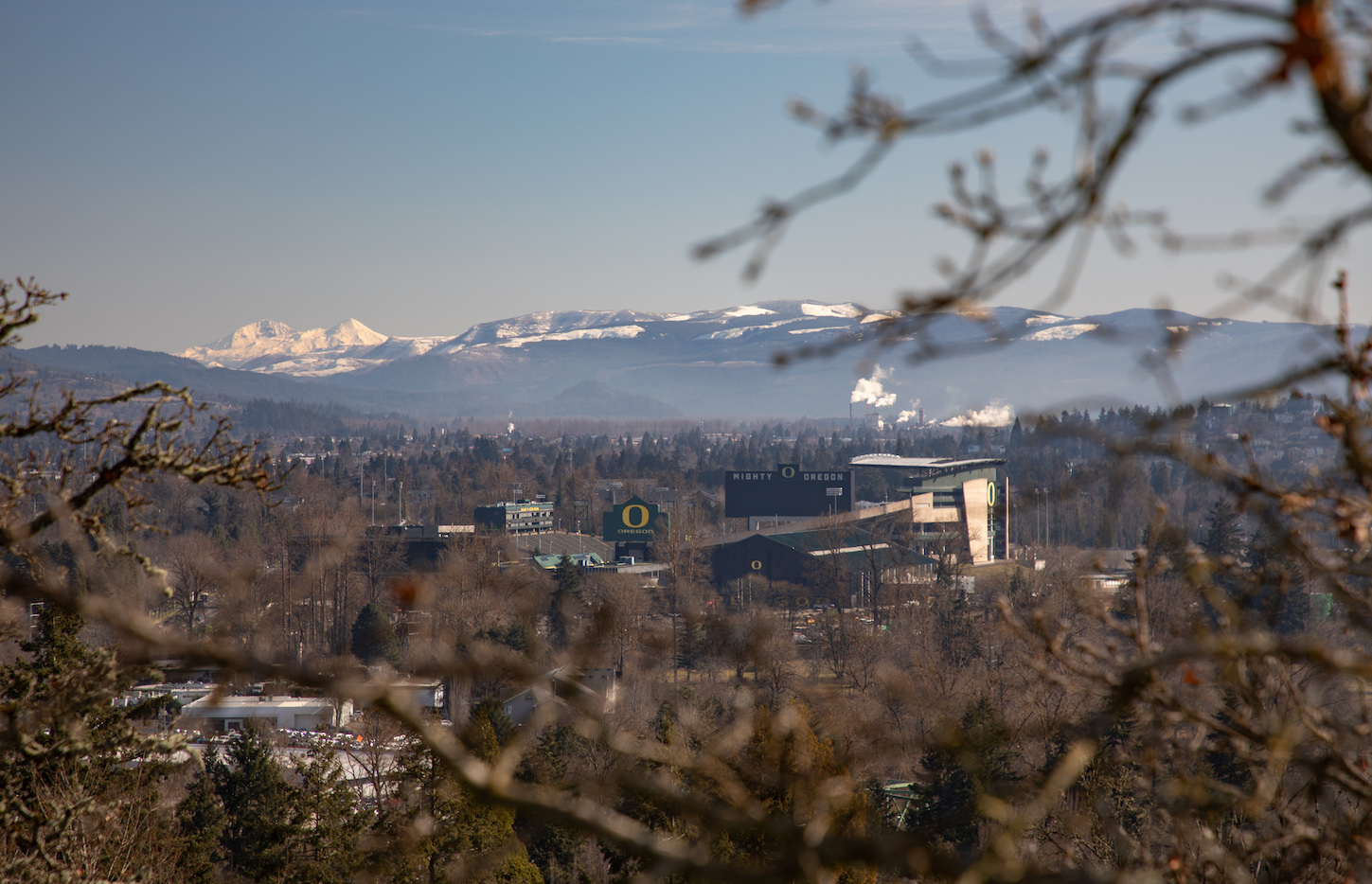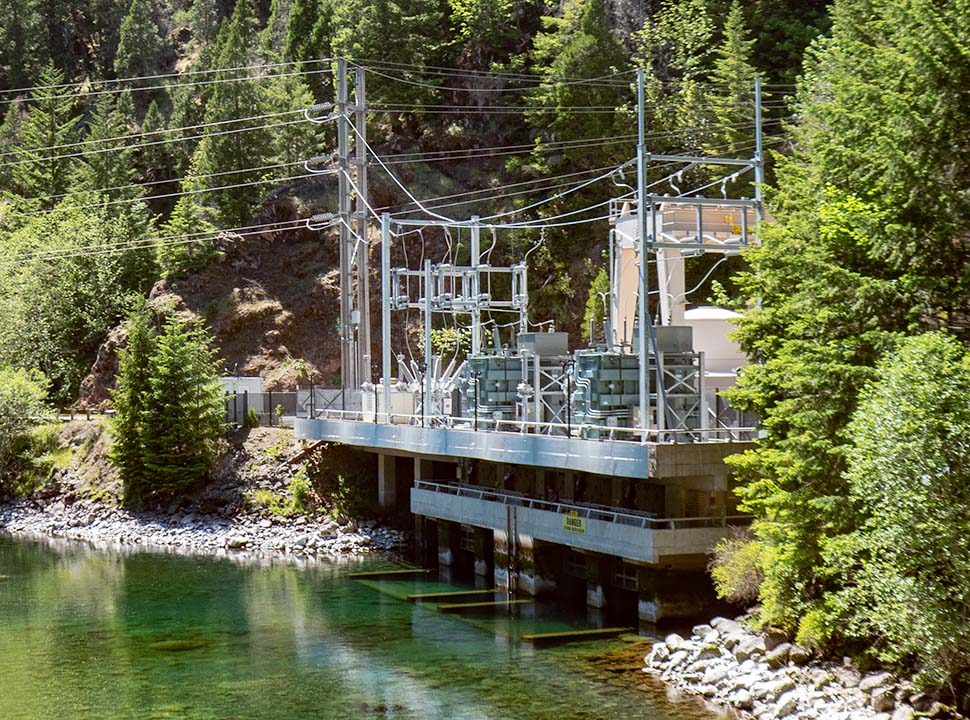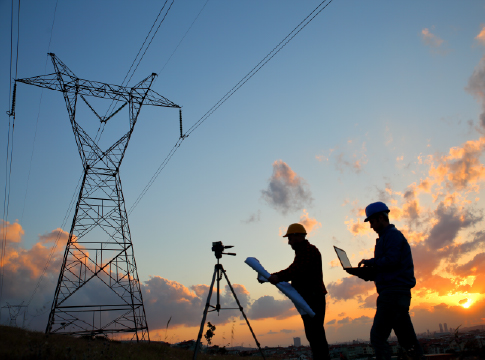More information
EWEB’s Integrated Resource Plan (IRP) will analyze possible energy resource portfolios with a goal of creating useful insights for long-term (20-year) electricity supply planning decisions.
Electric Outage: 1-844-484-2300
Water Emergency: 541-685-7595
EWEB Main: 541-685-7000
The utility is testing new equipment, leveraging technology, and incorporating third-party expertise to bolster electric system resiliency to a range of threats, including wildfire.
Find Out MoreRepresentatives from local utilities competed to see who has the best-testing water, who can assemble a water meter the fastest and who find the most creative way to solve a routine problem that water utility professionals often face.
Find Out MorePreliminary results of an EWEB study indicate that cutting back demand can contribute to maintaining a reliable, affordable energy supply.
Find Out MoreEWEB expresses disappointment that groups choose court over collaboration and firmly disputes the claims made in the lawsuit relating to operation of the utility’s Carmen-Smith Hydroelectric Project nearly 70 miles east of Eugene. EWEB takes its environmental and public safety responsibilities seriously. Contrary to the assertions in the lawsuit, construction of fish passage was postponed because EWEB’s regulator, the Federal Energy Regulatory Commission (FERC), required the utility to study and resolve urgent dam safety issues first.
Find Out MoreEWEB under-estimated energy usage for about one-fifth of upriver customers in December or January, resulting in higher true-up bills in February.
Find Out MoreThe Greenpower Grant, funded by voluntary customer subscriptions to Greenpower, not customer grants, supports projects that advance renewable energy, clean energy education or efforts to reduce or offset local carbon emissions.
Find Out MoreOne week into Women's History Month and just before International Women's Day on March 8, three women in EWEB leadership roles embarked on a 10-month-long journey of mentorship, fellowship, and professional development.
Find Out MoreBusinesses can cut energy costs with EWEB’s free Energy Assessments and efficiency programs. Plus, for a limited time, BRING is offering $1,000 rebates for qualifying upgrades—apply by Feb. 28!
Find Out MoreEWEB line techs are proud partners and participants in the rodeo fundraiser every year.
Find Out MoreEWEB budgets funding to help customers struggling to pay their utility bill, but the need is always greater than what we can provide alone. Energy Share, our customer donation funded program helps fill the gap.
Find Out MoreFive grants support programs benefiting homeless youth and bike sharing, among others.
Find Out MorePeak electricity demand this season surpasses demand levels during last year’s ice storm.
Find Out MoreCost of rebuilding EWEB's electrical system will surpass $11 million
Find Out MoreCommunications Specialist and "Resident EWEB Photographer" Adam Spencer shares his favorite photos - and the stories behind them - from a busy year of getting things done, being part of the community, and inspiring the next generation of stewards.
Find Out MoreFunds will be used to support fuels reduction work on a landscape scale in high-risk areas in the McKenzie River Valley and Eugene South Hills.
Find Out MoreFebruary 12, 2025 • Aaron Orlowski, EWEB Communications

Demand for electricity in EWEB's service territory ascended to the highest levels in nearly a decade on Feb. 12.
Demand topped out around 8 a.m. at 493 megawatts. The official overnight low temperature descended to 22 degrees F, but some areas of Eugene saw temperatures dip into the teens.
Frigid temperatures cause energy demand to soar as heaters work harder to keep homes and businesses warm. Energy demand on the morning of Feb. 12 topped this winter’s previous record of 475 megawatts, which occurred on Jan. 28.
“When the cold lingers for days on end, energy demand tends to build, as indoor spaces never fully warm up,” said Katrina Starr, an energy trader at EWEB. “The cold temperatures we’ve seen in the last few days have been the longest stretch of cold that we’ve seen since 2017.”
In 2017, energy demand soared to 524 megawatts on Jan. 6, when low temperatures dropped to 13 degrees. But even that level of demand is well below EWEB’s all-time record, which took place on Dec. 9, 2013, when temperatures plummeted to -10 degrees F. That morning around 9 a.m., EWEB customers were consuming 557 megawatts of electricity, as heaters worked full-bore to keep homes warm.
The highest energy demand of the year almost always occurs in January or February, when temperatures are their lowest and cold fronts bear down on the Pacific Northwest. The overnight lows are the primary driver of peak energy demand, which tends to occur in the early morning hours.
“In our area, peak demand happens during the winter,” said EWEB Chief Energy Resources Officer Brian Booth. “As we plan for the future, we need to carefully consider adding energy resources to our mix that we can ramp up during cold weather to keep people warm and safe. Our existing hydropower resources do this very well, but we’ll need additional on-demand resources that can keep up.”
EWEB prepares for impending ice storm.
A wintry mix of snow and ice will begin falling in Eugene Wednesday night, according to the National Weather Service. EWEB crews are preparing for any possible outages.
Forecasts indicate that this storm will be milder than the 2024 ice storm, when a total of 38,000 EWEB customers lost power at some point and when EWEB crews worked 16-hour days for nearly two weeks straight to get the power back on for customers.
Precipitation will initially begin as mixed freezing rain and snow Wednesday night, transitioning over primarily to freezing rain on Thursday. Significant ice accumulations will be possible. Ice and snow accumulation increase the risk of tree limbs falling on power lines which can lead to power outages and downed wires.
EWEB has activated its incident response protocols and crews are on standby to brave the cold and ice overnight to get the power back on for any outages that do occur. The utility has confirmed that critical equipment and systems are ready to be used in restoration. As always, crews will focus first on making any dangerous areas safe, then assess the situation to develop response plans.
If community members see downed power lines, always assume the line is energized and stay at least 50 feet away. If the downed line is across a street or sidewalk, call 911. Remember to stop and observe to survive.
EWEB’s Integrated Resource Plan (IRP) will analyze possible energy resource portfolios with a goal of creating useful insights for long-term (20-year) electricity supply planning decisions.
Para asistencia en español llame al 541-685-7000, presione 9
Mailing Address: 4200 Roosevelt Blvd., Eugene, OR 97402
Phone: 541-685-7000
Toll free: 800-841-5871
Email: eweb.answers@eweb.org
Customer service phone hours: 8:30 a.m. to 5 p.m. Monday - Friday



